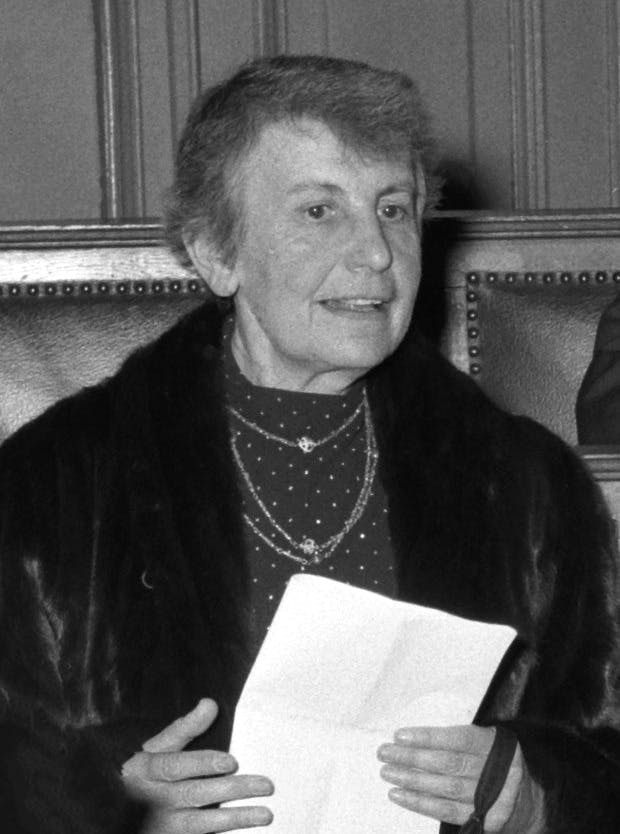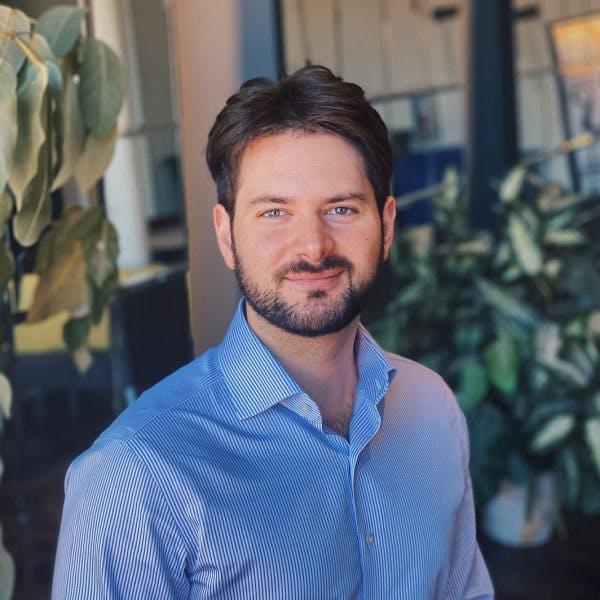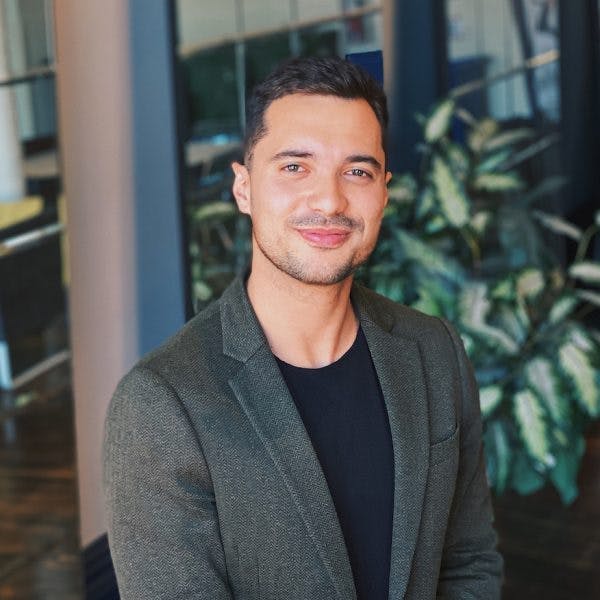Anna Freud
Children are People Too
Intro
Anna Freud contributed an understanding of children to psychoanalysis.1 Her father, Sigmund Freud, pioneered psychoanalysis: a set of therapeutic methods and techniques focused on subconscious thoughts, feelings, desires, and motivations. Anna built on and was inspired by her father’s work and legacy but did more than live in her father’s shadow.2
Anna is most well-known as the founder of child psychoanalysis, which applies the tenets of psychoanalysis to children aged 6 years old and up.3 While her father’s use of psychotherapy - the application of psychoanalytic concepts - worked to help adults reconstruct conceptualizations of their childhoods, Anna was expressly interested in helping children navigate their thoughts and feelings as they occurred.
Anna believed that every child should be recognized as a person in their own right, and explored this idea in her 1927 publication, Introduction to the Technique of Child Analysis.1 She also expanded on her father’s work by identifying different types of defense mechanisms that we use to protect ourselves in her 1936 book, The Ego and the Mechanisms of Defense.
Her work extending Sigmund’s psychoanalytic defense mechanisms and pioneering the subset of child psychoanalysis have contributed greatly to public understanding of child psychology. Child psychotherapy has since developed into a well-known therapeutic technique and Anna’s work has inspired important institutions such as the Anna Freud Centre in England, which provides mental health support and funding for children.4
I was always looking outside myself for strength and confidence, but it comes from within. It is there all the time.
- Anna Freud
On their shoulders
For millennia, great thinkers and scholars have been working to understand the quirks of the human mind. Today, we’re privileged to put their insights to work, helping organizations to reduce bias and create better outcomes.
Child psychoanalysis
Anna’s main scientific contribution was developing the field of child psychoanalysis: a sub-field of psychoanalysis with modifications in place to match children’s needs. She held that child psychoanalysis should be a distinct mode of therapy, especially since children are less likely to voluntarily seek analysis.3 To this end, Anna emphasized the importance of establishing a strong therapeutic alliance: earning the child’s attention and trust before conducting any therapy. Additionally, Anna described ego defense mechanisms: methods one’s unconsciousness uses to protect itself from unpleasant feelings.6 The main mechanism she discussed was repression: trying to avoid and eliminate distressing memories, thoughts, or feelings from the conscious mind.
Sigmund Freud based his work in psychoanalytic theories and therapeutic techniques, which piqued his daughter’s interest in her teenage years.1 Specifically, Sigmund Freud was interested in how development is shaped by unconscious processes, including forgotten events from early childhood. Anna’s previous work as a teacher motivated her to apply psychoanalysis specifically to children. Child psychoanalysis became then an innovative extension of psychoanalysis.2 By studying the unconscious mind, psychoanalysts like Anna could determine memories, desires, or thoughts that influence children’s behaviors despite their lack of awareness.
Ultimately, Anna Freud argued that children should only be analysed when they reach 6 years of age: before that, it would be best to focus on children’s environments to support their psychosexual and emotional development, and to prevent emotional distress and unconscious conflict.3 In order to do this, Freud proclaimed the need for a strong therapeutic alliance relevant to the child’s needs.
According to Freud, child analysts should start by using Sigmund Freud’s psychosocial stages of development to create a timeline for healthy growth and development.5 If a certain aspect of the child’s development is observed to be lagging (i.e., hygiene, eating habits, etc.), the psychotherapist would assume the existence of some conflict or trauma and address it through therapy.
Notably, Freud recognized that it was harder for children to stay focused in therapy, relative to adults.3 Instead of having patients lie down on the signature Freudian couch, she allowed children to move around freely. She would behave similarly to the children to increase their comfort - if they played on the carpet, Freud would do the same. Freud viewed play as an adaptation to reality and believed that children would speak most freely and truthfully while playing. She always encouraged children to use drawing materials during therapy sessions and saw the drawings as important means of expression.
Freud’s approach emphasized the importance for children to view psychotherapists as caring and understanding adult figures, similar to a teacher. This tenet holds true today, as child psychotherapists avoid becoming a “replacement parent” so the child can still build a secure attachment to their parents.5 Freud’s theorization of child psychoanalysis has had great impacts on our current children’s mental health services. Contemporary psychotherapy that combines both child psychoanalysis and parent-focused work has been effective, especially in children with anxiety disorders.7,8 Ultimately, Freud’s work has guided many subsequent developments within her field of child psychoanalysis.
Historical Biography
Born to Sigmund and Martha Freud on December 3, 1895 in Vienna, Austria, Anna Freud was the youngest of six children. Despite being born into wealth, Anna had an unhappy childhood.9 Although she had a distant relationship with her mother and was jealous of her older sister, Freud admired her father.1 By the age of 14, Freud showed an interest in psychoanalysis. She attended the Cottage Lyceum high school for girls until 1912, where she performed well.3 After high school, Freud trained as a teacher’s apprentice for six years at Cottage Lyceum, where she was highly praised by her supervisors.11
During Freud’s early days of teaching, she helped her father translate his works into German, which increased her interest in child psychology and psychoanalysis.11 With the encouragement and help of her father, Freud attended lectures and training in psychoanalysis. In 1918, she started psychoanalytic training with him.
Anna became a member of the Vienna Psychoanalytic Society in 1922, when she presented her paper Beating Fantasies and Daydreams on the relationship between children’s daydreams and masturbation desires.1 Anna’s father was diagnosed with cancer in 1923, which pushed Anna to take on more responsibilities in the Vienna Psychoanalytic Training Institute, where her father was also a member. Anna then established her own psychoanalytic practice with children and became an instructor at the Institute.12
In 1925, Freud became Secretary of the International Psychoanalytic Association and continued her child analyses.12 She began lecturing on child psychoanalysis and organizing conferences, all while taking care of her ill father. Due to his condition, Freud represented her father at various events such as award ceremonies, which contributed to her public recognition. As Freud took on these increased responsibilities, her most significant contributions, such as the field of child psychoanalysis, began to gain more attention. As a result, Freud published Introduction to the Technique of Child Analysis in 1927, followed by The Ego and the Mechanisms of Defence in 1936.1 The former outlined her conceptualizations of child psychoanalysis, while the latter discussed the ego’s defence mechanisms.
Freud opened the Jackson Nursery in Vienna for economically deprived toddlers, where she observed child behavior and experimented with feeding patterns.12 The nursery was closed in 1938 when Freud was interrogated by the Gestapo, as psychoanalysis was considered to be a Jewish conspiracy by the Nazis. She then fled to London, England with her father: when Sigmund passed away in 1939, Anna had already established a child psychoanalytic practice in London. After her father’s death, Anna spent most of her time with Dorothy Burlingham, another child psychoanalyst.
Together, Freud and Burlingham opened the Hampstead War Nurseries in 1941, which served as both a home and psychoanalytic therapy program for homeless children.1 Freud and Burlingham’s experiences at the nursery inspired three subsequent books: Young Children in Wartime (1942); Infants without Families (1943); and War and Children (1943). Freud then created the Hampstead Child Therapy Course and Clinic in 1959, where she trained clinical psychotherapists, provided clinical support for children and adolescents, and developed a research program. Freud served as the director until her death in 1982.
Relevant Quotes
“When the feelings of the parents are ineffective or too ambivalent, or when the emotions of the mother are temporarily compromised in another place, the children feel lost.”
-Anna Freud on the importance of mother figures for child development
“What I’ve always wanted for myself is much more primitive. It’s probably just the affection of the people I’m in contact with, and their good opinion of me.”
-Anna Freud on her lack of maternal affection
“We live trapped, between the churned-up and examined past and a future that awaits our work.”
-Anna Freud
“If something does not satisfy you, do not be surprised. That is what we call life.”
-Anna Freud
“That one lives without being able to judge oneself, criticize what one has achieved, and still enjoy what one does, is unimaginable to me.”
-Anna Freud
Books/Readings/Lectures/Seminars
An experiment in group upbringing by Anna Freud and Sophie Dann (1951): The two psychologists rehabilitated six 3-year-old orphans who were survivors of a Nazi concentration camp during WWII. Despite the children’s horrifying experiences, they bonded with one another and became a group: while they reacted poorly to the adults at the care center, “it was evident that they cared greatly for each other and not at all for anybody or anything else.” Freud and Dann observed the children’s abilities to form a “family,” in which each child was more concerned with feeding one another than themselves. Ultimately, the children took on both a “mother” and “child” role.
Anna Freud: The Dream of Psychoanalysis by Robert Coles: This biography offers a unique perspective on Anna Freud, based on Coles’ direct work and association with her. Freud is described as warm and the “ego ideal,” far from the stereotype of a “distant psychoanalyst.”
Anna Freud: A Life Dedicated to Children by Uwe Henrik Peters: This biography provides a comprehensive overview of Freud’s life, tracing her childhood in Vienna all the way to her introduction to psychoanalysis. It also details her own work in child psychoanalysis and her founding of the Hampstead Clinic.
Anna Freud: Under Analysis: This short documentary provides an overview of Freud’s childhood, her father’s analysis of her, her role in the creation of child psychoanalysis, and her relationship with Dorothy Burlingham.
The Ego and the Mechanisms of Defense by Anna Freud (1936): In the first definitive book on defense mechanisms, Freud clearly defines and exemplifies the defence mechanisms originally suggested by her father. Freud spent most of her time and research on five specific mechanisms: repression; regression; reaction formation; projection; and sublimation. Originally published in German, this book was quickly translated into English and recognized as a major contribution to psychoanalysis.
Normality and Pathology in Childhood by Anna Freud (1968): In this book, Freud describes her experiences as the founder and director of Hampstead Child Therapy Course and Clinic in London. She discusses how play activities are children’s adaptations to reality. Freud also writes about her work with parents, and the influences of parental analysis on children.
War and Children by Anna Freud and Dorothy Burlingham (1943): This book is based on the authors’ experiences in some of WWII’s War Nurseries, which took care of children who had lost their caregivers to the War. By recording their observations and interactions, Freud and Burlingham hoped their work could inform future psychologists’ treatment plans for children who grew up during WWII.
References
- Sander, A. M. (2015). Anna Freud. Institute of Psychoanalysis. https://psychoanalysis.org.uk/our-authors-and-theorists/anna-freud
- Burton, E. S. (2015). Sigmund Freud. Institute of Psychoanalysis. https://psychoanalysis.org.uk/our-authors-and-theorists/sigmund-freud
- Anna Freud: Life and Work. (2018). The Freud Museum. https://www.freud.org.uk/education/resources/anna-freud-life-and-work
- About the Anna Freud Centre. (2021). Anna Freud Centre. https://www.annafreud.org
- Psychoanalysis for Children and Teens. (2009). Columbia University. https://www.psychoanalysis.columbia.edu/patients/children-and-teens/psychoanalysis-children-and-teens
- Anna Freud. (2020, November 29). Encyclopedia Britannica. https://www.britannica.com/biography/Anna-Freud
- Von Klitzing, K., White, L. O., Otto, Y., Fuchs, S., Egger, H. L., & Klein, A. M. (2014). Depressive comorbidity in preschool anxiety disorder. Journal of Child Psychology and Psychiatry, and Allied Disciplines, 55(10), 1107-1116.
- Göttken, T., White, L. O., Klein, A. M., & Von Klitzing, K. (2014). Short-term psychoanalytic child therapy for anxious children: A pilot study. Psychotherapy (Chic), 51(1), 148-158.
- Anna Freud, psychoanalyst, dies in London at 86. (1982, October 10). The New York Times Web Archive. https://archive.nytimes.com/www.nytimes.com/learning/general/onthisday/bday/1203.html
- Cherry, K. (2020, November 26). Anna Freud Biography (1895-1982). Verywell Mind. https://www.verywellmind.com/anna-freud-biography-1895-1982-2795536#citation-3
- Young-Bruehl, E. (2008). Anna Freud: A Biography. Yale University Press.
- Noor, I. (2020, June 7). Anna Freud Biography and Contributions to Psychology. Simply Psychology. https://www.simplypsychology.org/anna-freud.html
About the Authors
Dan Pilat
Dan is a Co-Founder and Managing Director at The Decision Lab. He is a bestselling author of Intention - a book he wrote with Wiley on the mindful application of behavioral science in organizations. Dan has a background in organizational decision making, with a BComm in Decision & Information Systems from McGill University. He has worked on enterprise-level behavioral architecture at TD Securities and BMO Capital Markets, where he advised management on the implementation of systems processing billions of dollars per week. Driven by an appetite for the latest in technology, Dan created a course on business intelligence and lectured at McGill University, and has applied behavioral science to topics such as augmented and virtual reality.
Dr. Sekoul Krastev
Sekoul is a Co-Founder and Managing Director at The Decision Lab. He is a bestselling author of Intention - a book he wrote with Wiley on the mindful application of behavioral science in organizations. A decision scientist with a PhD in Decision Neuroscience from McGill University, Sekoul's work has been featured in peer-reviewed journals and has been presented at conferences around the world. Sekoul previously advised management on innovation and engagement strategy at The Boston Consulting Group as well as on online media strategy at Google. He has a deep interest in the applications of behavioral science to new technology and has published on these topics in places such as the Huffington Post and Strategy & Business.






